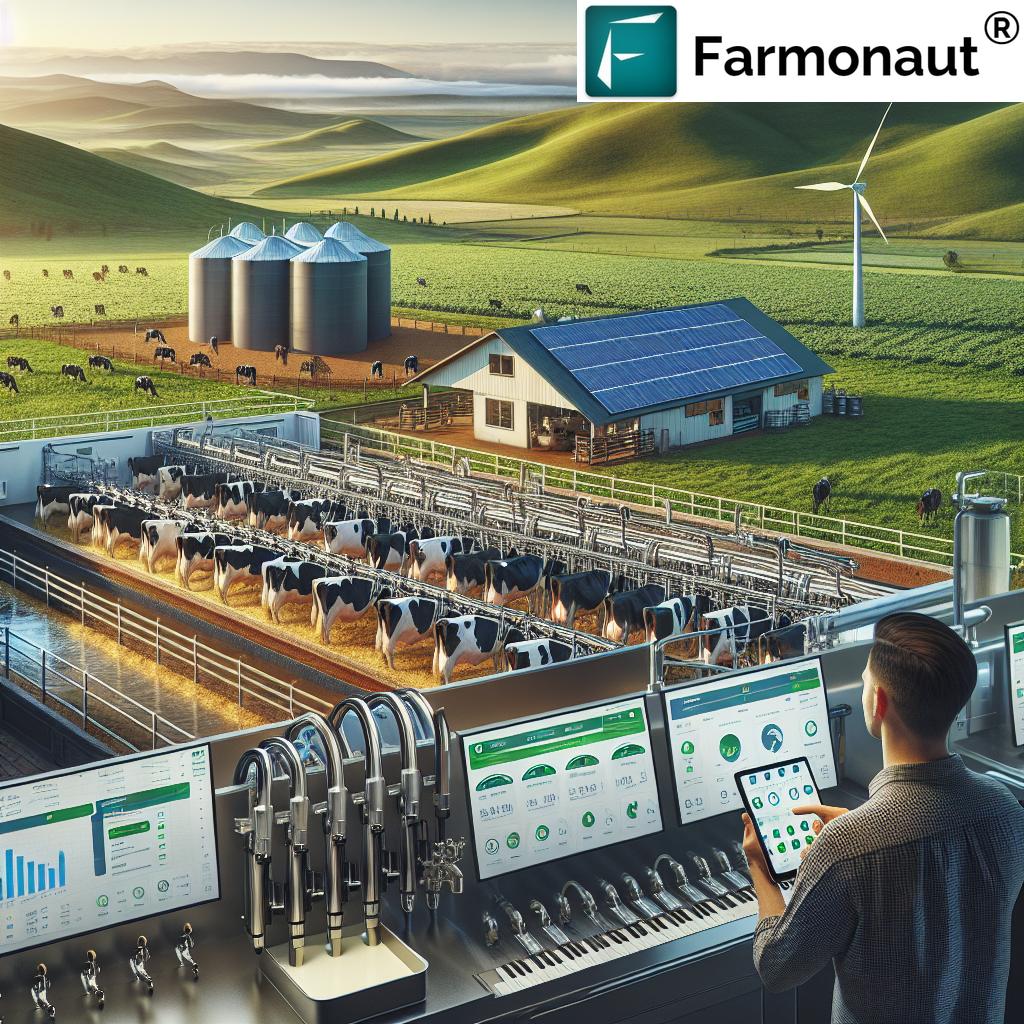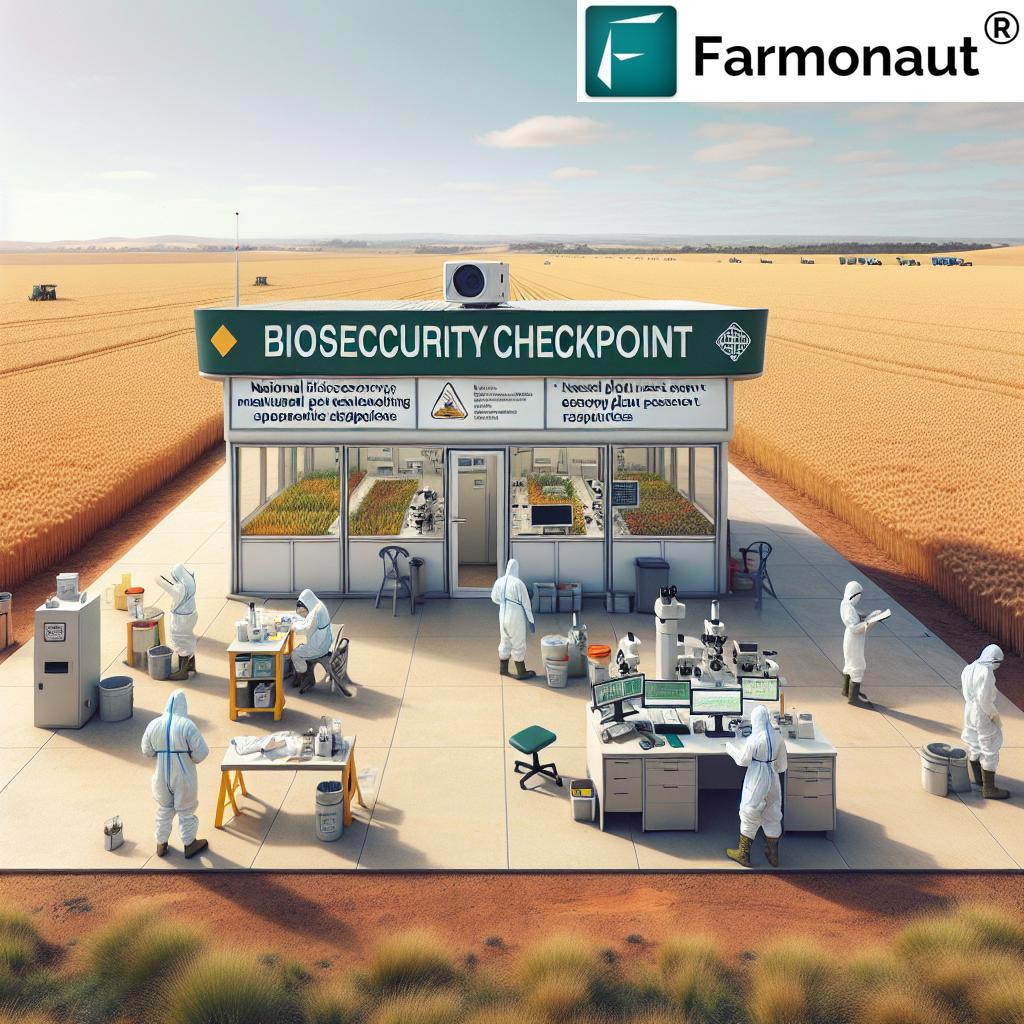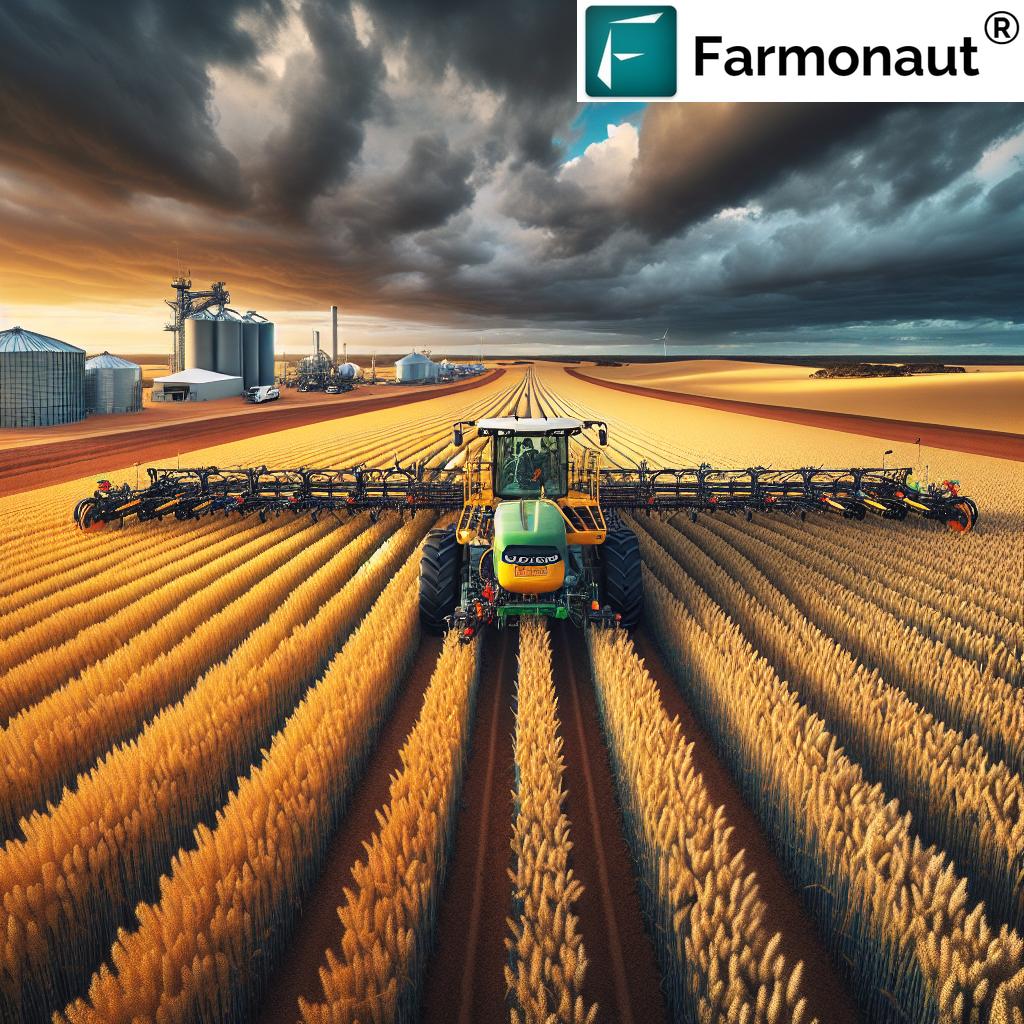Sustainable Crop Protection: Balancing Productivity and Environmental Stewardship in Australian Agriculture
“Australian farmers using integrated pest management strategies reduce pesticide use by up to 50% while maintaining crop yields.”
In the vast expanse of Australian agriculture, we find ourselves at a crucial juncture where the need for sustainable crop protection has never been more pressing. As we navigate the challenges of feeding a growing population while safeguarding our precious environment, innovative approaches to pest management and crop health are emerging as key solutions. In this comprehensive exploration, we’ll delve into the intricate balance between agricultural productivity and environmental stewardship, with a particular focus on the Australian context.
The Evolution of Crop Protection in Australia
Australia’s agricultural landscape has undergone significant transformations over the years. From traditional farming methods to the adoption of modern technologies, the journey has been one of constant innovation and adaptation. Today, we stand at the forefront of a new era in crop protection, where science, technology, and environmental consciousness converge to shape the future of farming.
- Historical perspective on Australian agriculture
- Shift from conventional to sustainable practices
- Role of crop protection in ensuring food security
As we explore these developments, it’s crucial to understand the pivotal role that crop protection plays in maintaining food security and agricultural productivity. The challenges faced by Australian farmers are unique, ranging from extreme weather conditions to invasive pests and diseases that threaten crop yields.
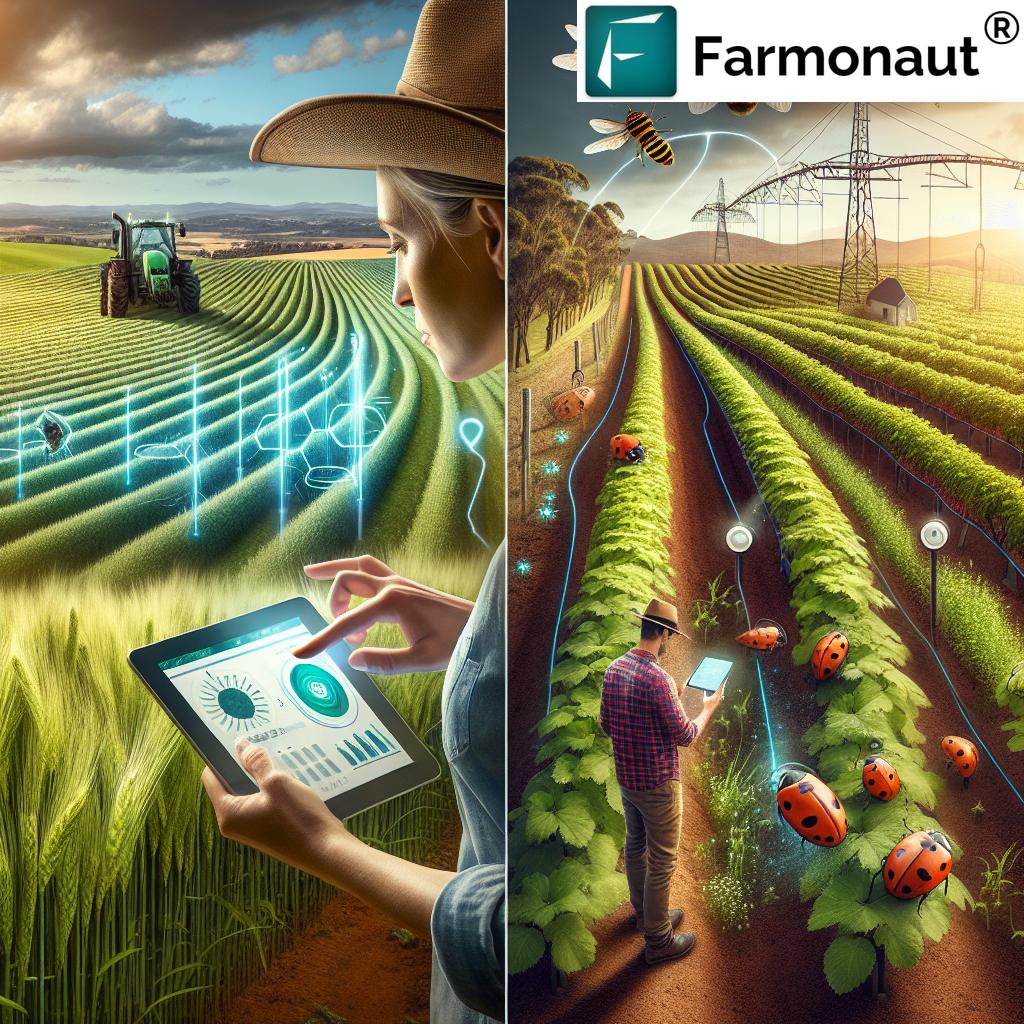
The Importance of Sustainable Crop Protection
Sustainable crop protection is not just a buzzword; it’s a necessity for the long-term viability of Australian agriculture. By implementing environmentally friendly pesticides and organic farming methods, we can significantly reduce the ecological footprint of our agricultural practices while maintaining high levels of productivity.
- Defining sustainable crop protection
- Benefits for farmers, consumers, and the environment
- Challenges in implementation and adoption
One of the key aspects of sustainable crop protection is the use of integrated pest management (IPM) strategies. These comprehensive approaches combine various control methods to manage pests effectively while minimizing environmental impact. By adopting IPM, Australian farmers are not only protecting their crops but also preserving biodiversity and soil health.
Innovative Pest Management Solutions
The landscape of pest management is rapidly evolving, with new technologies and methodologies emerging to address the complex challenges faced by Australian farmers. From precision agriculture to biological control agents, these innovations are revolutionizing the way we approach crop protection.
- Precision agriculture technologies
- Biological control methods
- Advancements in pest monitoring and forecasting
One of the most exciting developments in this field is the integration of satellite-based monitoring systems. Companies like Farmonaut are at the forefront of this revolution, offering advanced solutions that enable farmers to track crop health, detect pest infestations early, and make data-driven decisions.
Explore Farmonaut’s cutting-edge satellite monitoring technology:
The Role of Biotechnology in Crop Protection
“Biotechnology advancements have led to genetically modified crops that can increase yields by 22% while reducing pesticide use by 37%.”
Biotechnology has emerged as a powerful tool in the arsenal of sustainable crop protection. Genetically modified (GM) crops, developed through careful scientific research, offer resistance to pests and diseases, reducing the need for chemical interventions. While the topic of GM crops remains controversial, their potential to contribute to sustainable agriculture cannot be ignored.
- Overview of GM crops in Australia
- Benefits and concerns surrounding biotechnology
- Future prospects and research directions
It’s important to note that the adoption of GM crops in Australia is subject to strict regulations and ongoing scientific scrutiny. The focus is on developing varieties that not only enhance productivity but also align with environmental stewardship goals.
Environmentally Friendly Pesticides: A Balanced Approach
While the ultimate goal is to reduce reliance on chemical interventions, environmentally friendly pesticides play a crucial role in modern sustainable agriculture. These products are designed to target specific pests while minimizing harm to beneficial organisms and the broader ecosystem.
- Types of eco-friendly pesticides
- Application techniques and best practices
- Regulatory framework for pesticide use in Australia
The development and use of these pesticides are guided by rigorous scientific research and stringent regulatory standards. Australian farmers are increasingly adopting these solutions as part of their integrated pest management strategies, striking a balance between effective crop protection and environmental conservation.
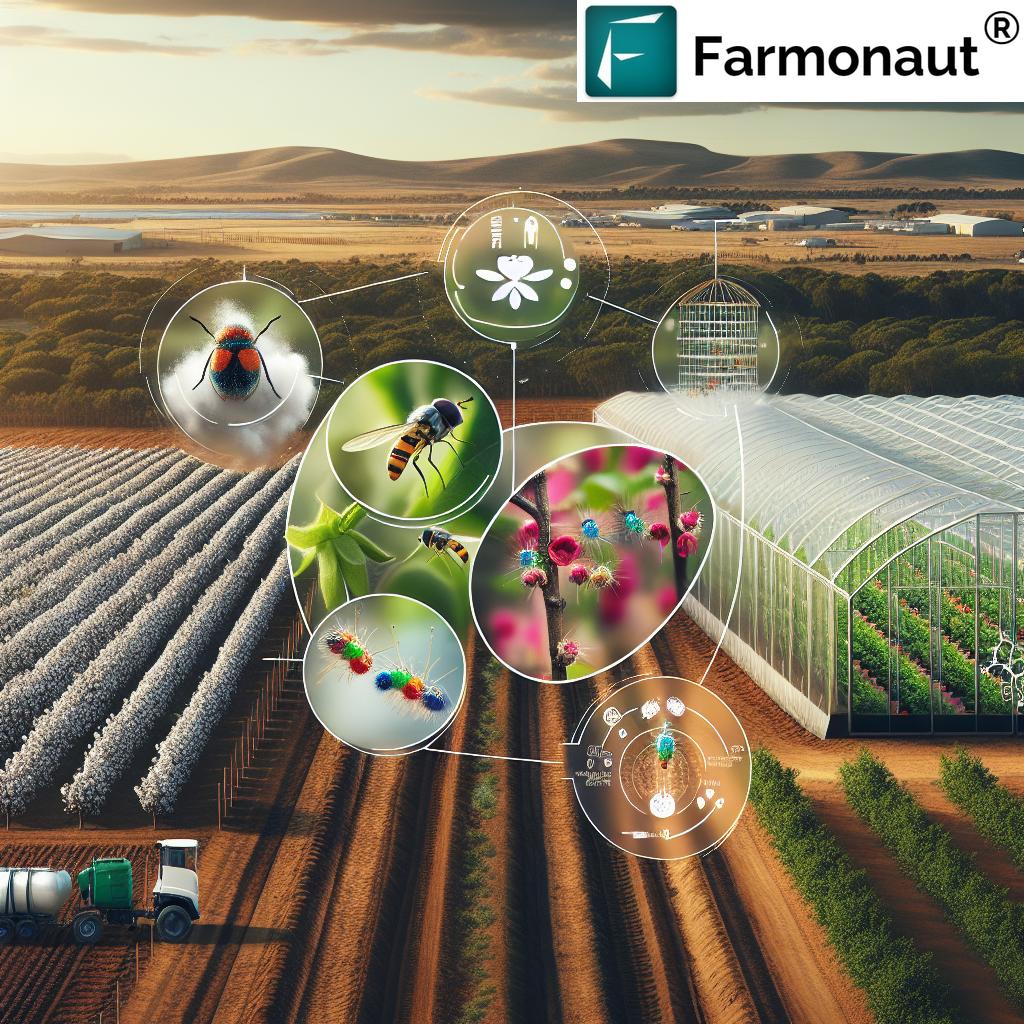
Organic Farming: A Growing Trend in Australian Agriculture
Organic farming represents a holistic approach to crop protection that eschews synthetic chemicals in favor of natural methods. This sector has seen significant growth in Australia, driven by consumer demand for chemical-free produce and a growing awareness of environmental issues.
- Principles of organic farming
- Challenges and opportunities in the Australian context
- Certification processes and market dynamics
While organic farming presents its own set of challenges, particularly in pest and disease management, innovative solutions are constantly being developed. From companion planting to the use of natural predators, organic farmers are pioneering sustainable crop protection methods that could have broader applications in conventional agriculture.
The Impact of Climate Change on Crop Protection
Climate change poses significant challenges to Australian agriculture, with shifting weather patterns and extreme events affecting pest populations and crop vulnerabilities. Adapting crop protection strategies to these changing conditions is crucial for maintaining agricultural productivity and food security.
- Climate-related pest and disease challenges
- Adaptation strategies for Australian farmers
- Research initiatives on climate-resilient crop protection
Technology plays a vital role in addressing these challenges. Precision agriculture tools, such as those offered by Farmonaut, enable farmers to monitor and respond to changing conditions in real-time, optimizing resource use and enhancing resilience to climate-related threats.
Discover how Farmonaut’s technology can help you adapt to climate challenges:
Integrated Pest Management: A Cornerstone of Sustainable Agriculture
Integrated Pest Management (IPM) represents a comprehensive approach to crop protection that combines various strategies to manage pests effectively while minimizing environmental impact. This method is gaining traction among Australian farmers as a sustainable and cost-effective solution.
- Key components of IPM
- Implementation strategies for different crop types
- Success stories from Australian farms
IPM emphasizes the importance of monitoring and early detection of pest issues. Advanced technologies, such as satellite-based crop monitoring systems, play a crucial role in making IPM more effective and accessible to farmers of all scales.
The Role of Technology in Modern Crop Protection
Technology is revolutionizing crop protection practices, offering unprecedented precision and efficiency. From AI-powered pest identification to drone-based applications of crop protection products, these innovations are transforming the agricultural landscape.
- Satellite-based crop monitoring
- AI and machine learning applications
- IoT sensors for real-time data collection
Farmonaut’s satellite-based crop monitoring system exemplifies how technology can empower farmers with real-time insights into crop health and pest pressures. By leveraging these tools, farmers can make more informed decisions, optimizing their crop protection strategies while minimizing environmental impact.
Explore Farmonaut’s API for advanced agricultural data integration:
Regulatory Framework and Policy Implications
The Australian government plays a crucial role in shaping the landscape of sustainable crop protection through regulations, policies, and support programs. Understanding this framework is essential for farmers, researchers, and industry stakeholders.
- Overview of Australian agricultural policies
- Regulatory bodies and their roles
- Future policy directions and international cooperation
These regulations aim to strike a balance between promoting agricultural productivity and safeguarding environmental and human health. They cover various aspects of crop protection, from the approval of new pesticides to the implementation of sustainable farming practices.
The Future of Crop Protection: Emerging Trends and Innovations
As we look to the future, several exciting trends and innovations are poised to shape the landscape of crop protection in Australia and beyond. These developments promise to enhance sustainability, efficiency, and resilience in agricultural practices.
- Nanotechnology in pest control
- Gene editing for pest-resistant crops
- Artificial intelligence in pest forecasting
These emerging technologies hold the potential to revolutionize crop protection, offering more targeted, efficient, and environmentally friendly solutions. However, their development and implementation must be guided by rigorous scientific research and ethical considerations.
Comparative Analysis of Sustainable Crop Protection Methods
To provide a clear overview of the various sustainable crop protection methods available to Australian farmers, we’ve compiled a comparative analysis table. This information will help in understanding the strengths and considerations of each approach.
| Protection Method | Environmental Impact | Pest Control Effectiveness (%) | Crop Yield Impact (%) | Adoption Rate in Australia (%) | Cost-Effectiveness | Compatibility with Precision Agriculture |
|---|---|---|---|---|---|---|
| Organic Farming | Low | 70-80 | -10 to +5 | 2.4 | Medium | Medium |
| Integrated Pest Management | Low | 80-90 | +5 to +15 | 60 | High | High |
| Biocontrol | Low | 75-85 | 0 to +10 | 30 | Medium | High |
| GM Crops | Medium | 85-95 | +10 to +25 | 20 | High | High |
| Eco-friendly Pesticides | Low-Medium | 80-90 | +5 to +15 | 40 | Medium | High |
This table highlights the diverse range of sustainable crop protection methods available to Australian farmers. Each approach offers unique benefits and considerations, emphasizing the importance of tailored solutions for different agricultural contexts.
Case Study: Precision Agriculture in Action
To illustrate the real-world impact of sustainable crop protection methods, let’s examine how precision agriculture technologies are being applied in Australian farming. This case study demonstrates the practical benefits of integrating advanced monitoring and data analysis into crop protection strategies.
A wheat farmer in Western Australia implemented Farmonaut’s satellite-based crop monitoring system to optimize their pest management approach. By leveraging real-time data on crop health and environmental conditions, the farmer was able to:
- Identify pest hotspots early, allowing for targeted interventions
- Reduce overall pesticide use by 30% through precise application
- Improve crop yields by 15% due to more effective pest control
- Decrease water usage by 20% through optimized irrigation based on crop health data
This example showcases how technology-driven approaches can significantly enhance the effectiveness and sustainability of crop protection practices.
The Role of Education and Training
Implementing sustainable crop protection methods requires more than just access to technology and products. Education and training play a crucial role in equipping farmers with the knowledge and skills needed to adopt these practices effectively.
- Importance of continuous learning in agriculture
- Available training programs and resources in Australia
- Collaboration between research institutions and farmers
By investing in education and fostering collaboration between researchers, industry experts, and farmers, we can accelerate the adoption of sustainable crop protection practices across Australia.
Economic Considerations of Sustainable Crop Protection
While the environmental benefits of sustainable crop protection are clear, it’s equally important to consider the economic implications for farmers and the broader agricultural industry. This section explores the financial aspects of adopting sustainable practices.
- Cost-benefit analysis of sustainable methods
- Long-term economic impacts on farm profitability
- Market opportunities for sustainably produced crops
Understanding the economic dynamics of sustainable crop protection is crucial for encouraging widespread adoption and ensuring the long-term viability of these practices in Australian agriculture.
Global Context: Australia’s Role in Sustainable Agriculture
Australia’s efforts in sustainable crop protection contribute to the global movement towards more environmentally friendly agricultural practices. This section examines how Australian innovations and policies align with international trends and collaborations.
- Australia’s contribution to global sustainable agriculture initiatives
- International partnerships and knowledge sharing
- Potential for exporting sustainable crop protection technologies
By positioning itself at the forefront of sustainable agriculture, Australia has the opportunity to not only enhance its own food security and environmental stewardship but also to contribute valuable insights and innovations to the global agricultural community.
Conclusion: Embracing a Sustainable Future
As we navigate the complex landscape of modern agriculture, the importance of sustainable crop protection becomes increasingly clear. By embracing innovative technologies, implementing integrated pest management strategies, and fostering a culture of continuous improvement, Australian farmers are well-positioned to meet the challenges of food security and environmental stewardship.
The journey towards truly sustainable agriculture is ongoing, requiring collaboration between farmers, researchers, policymakers, and technology providers. Companies like Farmonaut play a crucial role in this ecosystem, offering tools and insights that empower farmers to make data-driven decisions and optimize their crop protection strategies.
As we look to the future, the continued development and adoption of sustainable crop protection methods will be essential for ensuring the resilience and productivity of Australian agriculture in the face of climate change and evolving pest pressures. By balancing productivity with environmental responsibility, we can create a more sustainable and prosperous agricultural sector for generations to come.
FAQs
- What is sustainable crop protection?
Sustainable crop protection involves methods and practices that manage pests, diseases, and weeds while minimizing environmental impact and ensuring long-term agricultural productivity. - How does precision agriculture contribute to sustainable crop protection?
Precision agriculture uses technologies like satellite imaging and AI to provide detailed crop health information, allowing for targeted and efficient pest management strategies. - Are organic farming methods effective for large-scale agriculture in Australia?
While organic farming can be challenging on a large scale, many Australian farmers successfully implement organic practices, often combining them with other sustainable methods for optimal results. - What role does biotechnology play in sustainable crop protection?
Biotechnology, including the development of genetically modified crops, can enhance pest resistance and reduce the need for chemical pesticides, contributing to more sustainable farming practices. - How is climate change affecting crop protection strategies in Australia?
Climate change is altering pest patterns and crop vulnerabilities, necessitating adaptive strategies and the use of climate-resilient crop varieties and protection methods.









